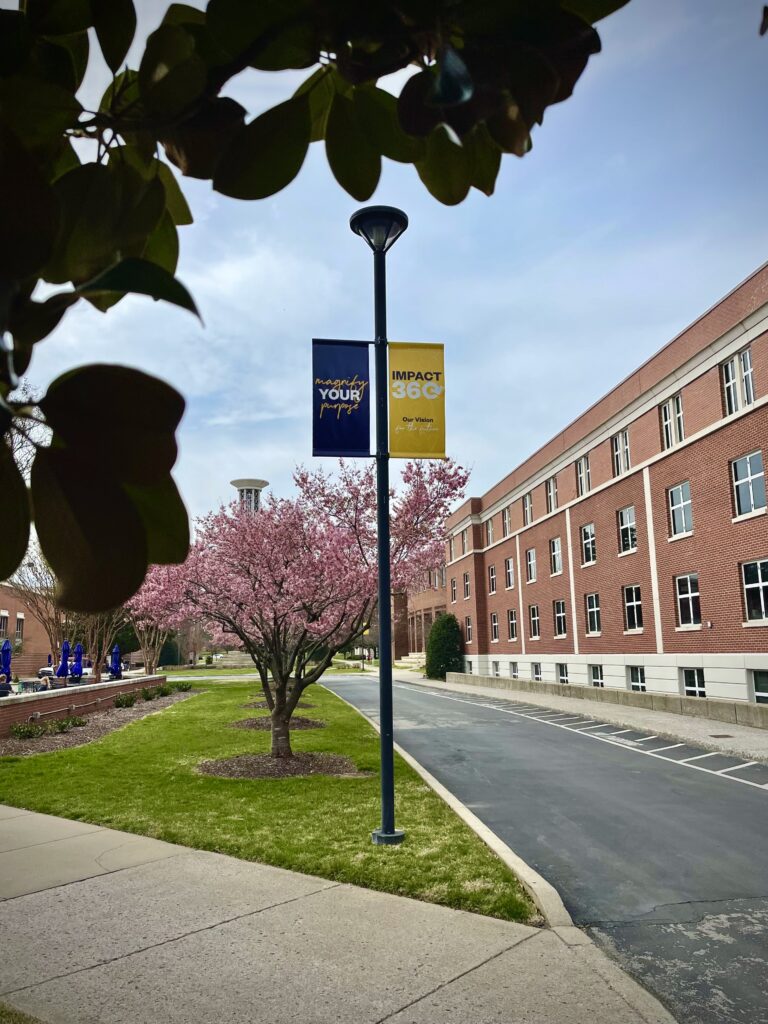Navigating the FAFSA maze: challenges and opportunities for universities
The Department of Education has made changes to this year’s Free Application for Federal Student Aid; however, the changes have caused delays for universities across the country.
The previous form was time consuming with as many as 108 questions. Now, there are as few as 18 questions. Certain information is now taken from the filer’s tax return, removing the need to look at old tax returns. Ron Anderson, Associate Vice President of Student Financial Services, said, “We do we agree that the FAFSA had become too complicated and really liked the idea of, you know, less questions and more direct information coming from the Internal Revenue.” The form now provides less opportunity for families to create more delays. “There’s no reason that, that information can’t come directly from the IRS versus families having to write it in and possibly getting it wrong, and then having delays because of that, but we’re excited about the changes.”
Ann Sowell, sophomore public relations major from Columbia, TN said, “ It will 100% be easier for FAFSA because FAFSA still has to be filled out every year, even if you’re in college. So it’s nice for college; college people can just be like, ‘Nothing’s changed, submit it.’ But for the first time, my brother’s doing it because he’s going to college next semester, and 108 questions is a lot.”
The delays leave little time for getting financial aid packages out to high school students who need to decide. Anderson said, “Nine months before school started, we were already getting financial aid packages out to high school students who need to make a decision during the spring as to where they’re going to go to college. So with those results, not coming this year until the middle of March at the earliest. It’s definitely created smaller windows to get those things done.”
Sowell said, “It is frustrating because it’s such a strict deadline for students.”
The Department of Education has been facing criticism about the delays. Lipscomb is a member of the National Association of Student Financial Aid Administrators, which advocates for their members. Anderson said, “They were the ones that from the very beginning were saying, you know, these changes are great, but let’s make sure we get them done on time.”
The Pell grant has a maximum value of $7,395. Anderson said, “The government is saying that more students are going to qualify for it, and more students are going to qualify for more of it than they might have in the past. So we’re really excited about that. We believe very firmly that a government that invests in its students really helps itself.”
Students like Sowell believe the eligibility increase is necessary. Sowell said, “ A Pell Grant should help out the average person too. It’s important that more people who still need that financial help can get that financial help.”
Johnathan Akin, Assistant Vice President of Undergraduate Admissions, said, “Fortunately, you know, anybody who’s been offered admission, has at least received that notification of what merit they’re getting.”
Universities share a common theme of enrollment concerns when students make their final decisions. In the past, Lipscomb has had record breaking numbers in enrollment. Akin does not believe that the FAFSA will have a negative impact. “I don’t think we’re overly concerned about it having a negative impact on enrollment. As far as you know, the number of new students that we have attend Lipscomb, I think we’re just more more focused now just on the timeline.”

During the wait, students can access resources that can help them get an estimate of what they may receive. Akin said, “Basically, there’s a FAFSA submission summary form that they can send us, and we can use that to at least help them with institutional aid. It’s hard to identify state and federal aid without the FAFSA, but we can at least tell them, you know, if they qualify for any Lipscomb institutional aid.”
Another resource students can use is the net price calculator. “That’s one of the tools we’re pointing families to, it’s a really great resource where they can go and they can plug in their information. By doing that, it will give them an estimated award of what they might qualify for here at Lipscomb and that one includes state and federal funding as well.”
Many universities use May 1 as Decision Day but are beginning to push back their admissions deadline since they will not receive financial aid information until March. However, Lipscomb will not be changing its deadline. Anderson said, “It doesn’t mean that students can’t make a decision after that date. It’s just that we would like to keep that same date in front of people.”
Moving the deadline back can cause other events to be moved back as well. Anderson said, “Some of the reasoning is, if you move a deadline like that, a lot of other things need to move as well.” Events like New Student Orientation would have to be moved which then leads to affecting other events set in place for the upcoming semester. “So we decided to stick with the deadline that we have, you know, allow plenty of exceptions and decisions to be made when students are ready.”
Sowell said, “I can’t imagine, for some it could be the difference between a state school and community college. And that’s wrapping up soon. Like this summer they expect you to commit somewhere. So I’m sure it can put a lot of people behind on what they’d like to know.”
Students are still encouraged to fill out the FAFSA and ask any questions they may have. Akin said, “I think the only thing I would add is just for families to know that we are here to support them and that we know this is kind of a unique time for them.” For more information about the FAFSA go to www.studentaid.gov.





